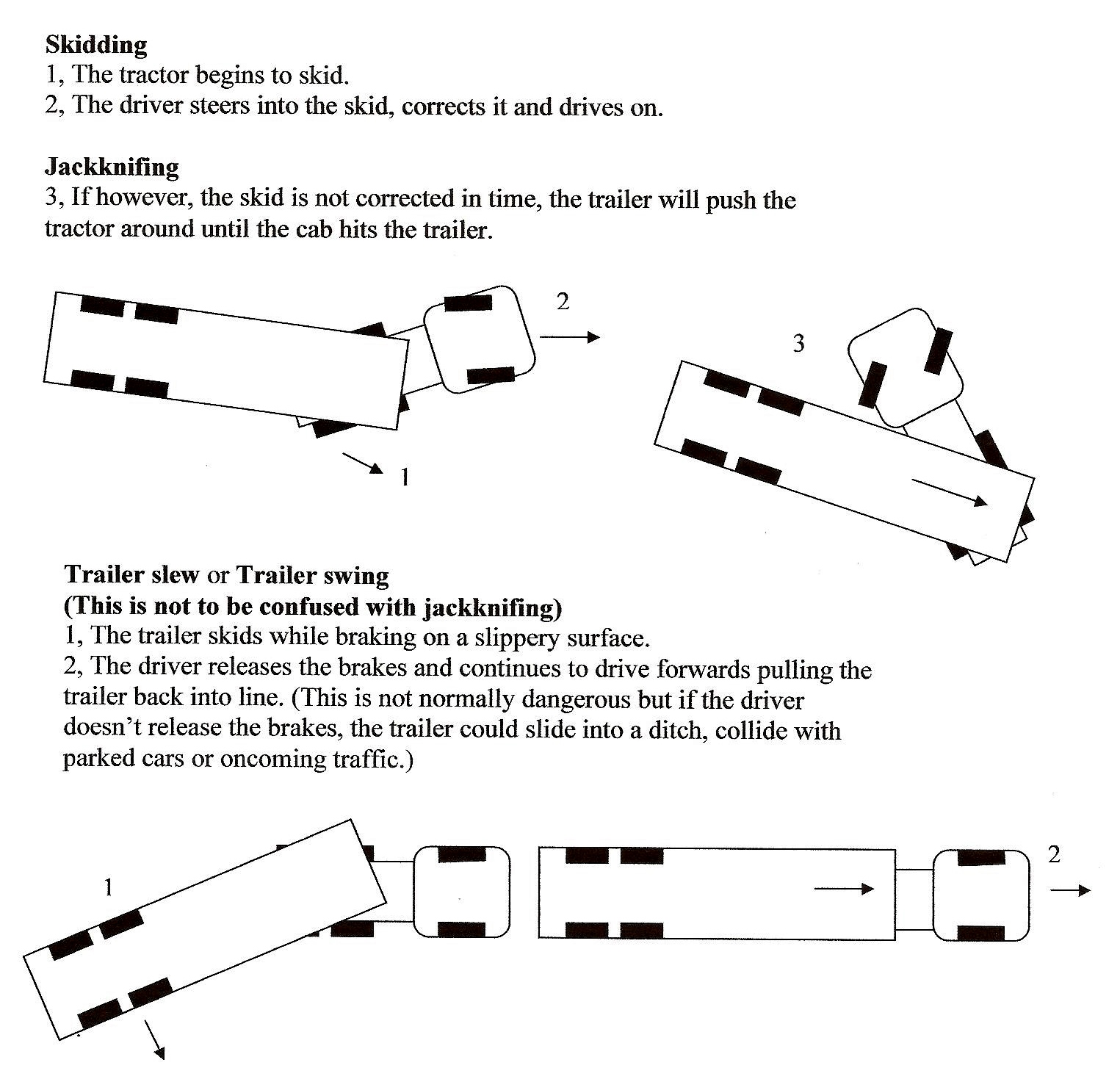Jackknifing on:
[Wikipedia]
[Google]
[Amazon]
 Jackknifing is the folding of an
Jackknifing is the folding of an
Brake Pressure Regulator – Patent 3762776
/ref>
 Jackknifing is the folding of an
Jackknifing is the folding of an articulated vehicle
An articulated vehicle is a vehicle which has a permanent or semi-permanent coupling in its construction. This coupling works as a large pivot joint, allowing it to bend and turn more sharply. There are many kinds, from heavy equipment to Arti ...
so that it resembles the acute angle of a folding pocket knife. If a vehicle towing a trailer skids, the trailer can push the towing vehicle from behind until it spins the vehicle around and faces backwards. This may be caused by equipment failure, improper braking, or adverse road conditions such as an icy road surface. In extreme circumstances, a driver may attempt to jackknife the vehicle deliberately to halt it following brake failure.
Trailer swing
When a trailer skids to one side, this is known as a trailer swing or trailer slew. This can occur on a slippery road surface, often where there is a cant. This is not the same as jackknifing and is not as serious, as the trailer will move back into line as the vehicle continues forwards. The driver must be aware, however, that the trailer could slide up against parked cars or aguard rail
Guard rails, guardrails, railings or protective guarding, in general, are a boundary feature and may be a means to prevent or deter access to dangerous or off-limits areas while allowing light and visibility in a greater way than a fence. Commo ...
, or that the wheels could slide into a ditch. This situation can occur especially when the trailer is empty or lightly loaded, and weather conditions cause violent gusts of crosswind
A crosswind is any wind that has a perpendicular component to the line or direction of travel. This affects the aerodynamics of many forms of transport. Moving non- parallel to the wind direction creates a crosswind component on the object and t ...
.
Anti-jackknife devices
One system with limited success was a device that mechanically limited the angle which a trailer could swing. A much more successful system was to fit the tractor with anti-lock brakes. Fitted originally to airplanes in the 1950s, anti-lock brakes have significantly reduced the number of heavy-vehicle accidents.Electronic brakeforce distribution
Electronic brakeforce distribution (EBD or EBFD) or electronic brakeforce limitation (EBL) is an automobile brake technology that automatically varies the amount of force applied to each of a vehicle's wheels, based on road conditions, speed, lo ...
varies the pressure to the rear brakes during heavy load or hard braking, enhancing driver control./ref>
Tractors
A tractor is an engineering vehicle specifically designed to deliver a high tractive effort (or torque) at slow speeds, for the purposes of hauling a Trailer (vehicle), trailer or machinery such as that used in agriculture, mining or constructio ...
were once commonly fitted with a lever in the cab to operate the trailer brakes (a trolley brake). The vehicle could be slowed or stopped using the trailer brakes only. Theoretically, this was a guaranteed way to prevent jackknifing; however, frequent use of the trailer brakes alone caused them to overheat and fade while the tractor brakes remained fresh. In the event of an emergency stop, the driver, applying the foot brake, could cause the trailer to jackknife because the tractor brakes lock while the trailer brakes are ineffective due to previous overheating. Trolley brakes largely disappeared from tractor units in North America in the 1980s and 1990s. An alternative to having a trailer brake lever in the cab is to fit the trailer with an electromagnetic brake.
See also
*Aquaplaning
Aquaplaning or hydroplaning by the tires of a road vehicle, aircraft or other wheeled vehicle occurs when a layer of water builds between the wheels of the vehicle and the road surface, leading to a loss of traction that prevents the vehicle ...
* Black ice
* Fishtailing
* Underride guard
* T-boning
References
{{Road accidents Trucks Road incidents